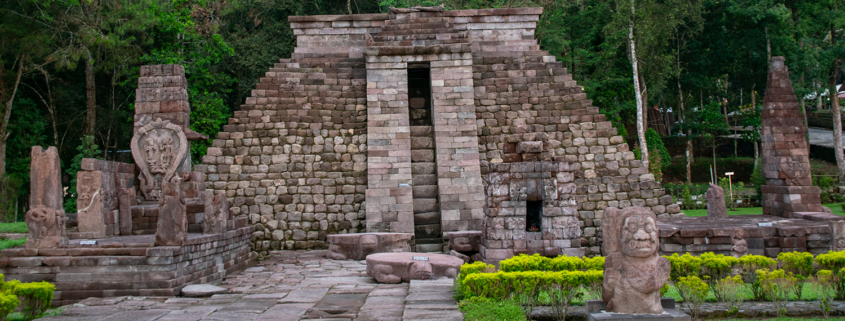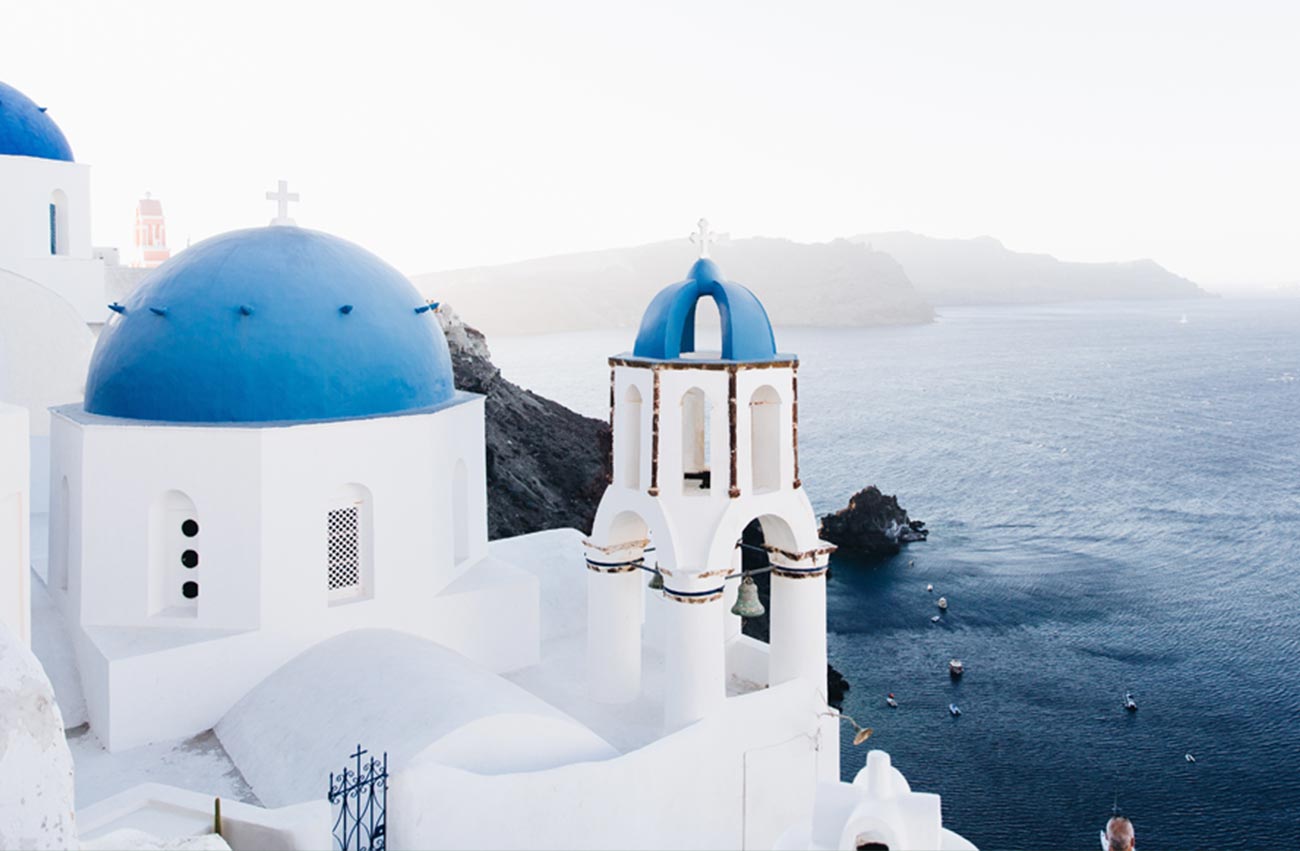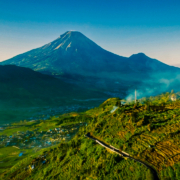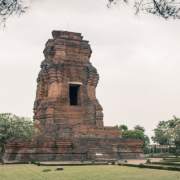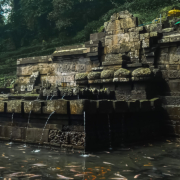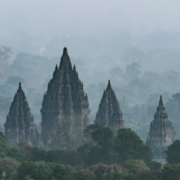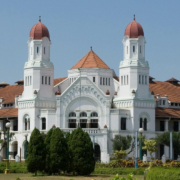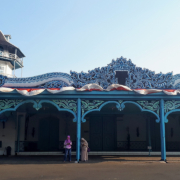Sukuh Temple: The Tantric Pyramid of Java’s Final Hindu Flame
Hidden on the misty western slopes of Mount Lawu in Central Java, Sukuh Temple is one of Indonesia’s most enigmatic and symbolically charged ancient sites. Built in the 15th century during the twilight of the Hindu-Javanese kingdoms, Sukuh breaks radically from classical temple styles. It features a step-pyramid structure, bold erotic imagery, and tantric symbolism—evoking echoes of Mayan architecture and Shaivite mysticism. It stands not only as a cultural outlier but as a last spiritual stronghold of Java’s indigenous Hindu wisdom before the island transitioned into a new Islamic era.
Historical Context
Sukuh Temple emerged in the late Majapahit period, during a time of political unrest, spiritual syncretism, and declining royal authority. As the once-mighty Hindu-Buddhist empire fragmented and Islam spread across the archipelago, rural and mountainous regions became sanctuaries for mystics and priests who preserved esoteric knowledge.
Built around 1437 AD (as indicated by an inscription found at the site), Sukuh was likely constructed by local nobles or priest-kings seeking to enshrine indigenous tantric-Hindu teachings, which diverged from the classical Brahmanical traditions found in places like Prambanan.
Architectural Uniqueness
Unlike the soaring spires of other Hindu temples in Java, Sukuh is shaped like a truncated pyramid, resembling Mesoamerican temples more than Indian mandalas. Its architecture is simple, geometric, and raw—built from rough-hewn andesite stones. The complex consists of:
- A steep step-pyramid platform crowned by an altar, believed to serve as a womb-shaped sanctuary or ritual space.
- Two front courtyards with massive stone gates and guardian statues.
- Relief panels and free-standing sculptures loaded with fertility and cosmic themes.
The alignment of the temple also correlates with celestial movements and mountain ley lines, suggesting Sukuh functioned as an energetic gateway for initiation and transformation.
Eroticism, Fertility & Tantra
Sukuh is widely known as “the erotic temple of Java” for its open use of sexual and fertility motifs—uncommon in later Javanese art. Among the striking elements:
- A lingam and yoni sculpture, symbolizing the union of Shiva and Shakti, divine masculine and feminine forces.
- A large relief of Ganesha with an exposed phallus, unusual even in tantric Shaivism.
- Scenes depicting ritual circumcision, symbolic of purification, rebirth, or spiritual passage.
These elements suggest that Sukuh may have been a tantric initiation center or a fertility cult site, where spiritual seekers underwent rites of passage, energetic awakening, or sexual alchemy in alignment with divine archetypes.
Symbolism and Metaphysical Layers
- Pyramid as Cosmic Mount: The step pyramid may represent Mount Meru, the axis of the universe, or a sacred mountain from which the initiate must ascend in spiritual growth.
- Fertility Imagery: Far from being obscene, the erotic carvings encode cosmic principles of creation, integration of opposites, and the generative power of union.
- Death and Rebirth Themes: Several figures are shown undergoing symbolic trials, such as decapitation, indicating ego death, karmic purging, and spiritual regeneration.
Sukuh is not merely a religious monument—it is a mystical diagram in stone, an altar for transformation of body, soul, and spirit through primal elemental forces.
Modern Experience
Today, Sukuh is a tranquil and uncrowded sanctuary, often enveloped in cool mist and silence. It draws:
- Historians and archaeologists, intrigued by its departure from Indianized architecture.
- Spiritual seekers and tantric practitioners, who intuitively sense the energy embedded in its form.
- Mystics and nature lovers, enchanted by its location on Mount Lawu, a mountain long revered for meditation, ancestral contact, and magical rites.
Sukuh is also part of a sacred triad with nearby temples like Cetho and Kethek, which collectively trace a spiritual ascent up the Lawu slopes.
Visitor Information
- Location: Berjo Village, Karanganyar Regency, Central Java
- Altitude: Approximately 910 meters above sea level
- How to Reach: About 35 km east of Solo City; accessible by car or motorbike
- Tips:
- Visit early morning or late afternoon for mystical atmosphere and fewer tourists.
- Combine with a visit to Cetho Temple further up Mount Lawu for a full spiritual journey.
- Dress respectfully—this is still a revered sacred site.
Sukuh Temple is a portal to Java’s esoteric heart—where ancient tantric secrets were carved into stone before vanishing into silence. It defies conventional temple aesthetics, speaking instead in symbols of sexuality, sacrifice, and spiritual evolution. In an age of decline, it dared to preserve the mystery teachings of life, death, and rebirth for those willing to see beyond form.
To stand before Sukuh’s pyramid is not merely to witness history, but to feel the pulse of a dying kingdom’s final sacred breath—raw, primal, and eternal.

